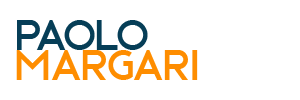How to boost personal productivity?
Personal productivity is about achieving goals or – better – efficiently accomplishing tasks that bring you closer to your goals.
The secret desire to be a machine-like productive individual is not uncommon.
It’s believed that if one could operate like a machine, one would never forget anything, and everything would be done on time.
However, this idea of being a machine can hinder productivity as it blinds people to the root causes of their problems.
Emotions such as guilt, shame, and fear often lie at the base of these issues, and learning to recognize and work with emotions skillfully is crucial for day-to-day productivity.
According to various research, highly productive people often follow three steps:
- observe their problems without judgment
- experiment with systems and tools
- maintain emotional mastery throughout this process.
Underneath most productivity problems lies an emotional issue.
Becoming aware of how emotions affect individuals can open up flexibility and freedom to make progress in areas where they might otherwise feel stuck.
Recognize an issue
Awareness is the critical first step to becoming more productive. Being aware of problems in one’s productivity can be difficult because it can be painful to admit that something is wrong.
The most influential people have regular practices to maintain awareness, such as journaling or mindfulness exercises.
Observe patterns
Once a problem has been recognized, the next step is observation.
Observing the issue without judgment can be challenging due to doubts and fears arising during this process.
However, once these feelings are overcome, it becomes possible to identify triggers or patterns related to the problem.
Try something new
After recognizing a problem and observing its patterns, experimentation is necessary.
This involves trying new solutions and finding what works best for each individual.
Investigation can be complex due to preconceived notions about what is acceptable, but allowing oneself to find what works best can significantly improve productivity.
For example, someone struggling with managing their inbox may try various strategies, such as scheduling specific times for checking email or discussing the issue with colleagues.
Ultimately, they may find that having someone else hold them accountable for regularly clearing their inbox works best for them.
This may not work for everyone, but the key is experimenting and finding what works.
Realizing that being a machine is not the ultimate goal can significantly change one’s approach to productivity.
It is essential to remember that productivity involves tools, systems, and emotions and how they guide individuals.
Productivity is about more than just software, notebooks, and to-do lists.
It involves understanding one’s emotions and how they can impact productivity.
By turning over the rock of productivity and identifying what lies beneath, individuals can discover the best productivity hack: self-awareness and emotional mastery.
Training and tools, particularly AI, can further help your journey to boost personal productivity.




